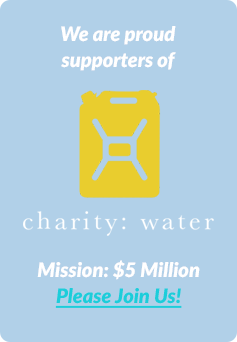Have you ever had an exciting new idea but before you took any steps you convinced yourself that it would fail?
When you stop before you start, that’s fear in action. And guess what? You are not alone.
If there is one thing we all have in common, it is fear. Fear is built in as one of the basic functions of the brain. It comes from a part of your brain that evolved first in reptiles. In her book, Steering by Starlight, Martha Beck calls it your inner lizard:
“The entire purpose of your reptilian brain is to continuously broadcast survival fears — alarm reactions that keep animals alive in the wild. These fears fall into two categories: lack and attack. On the one hand, our reptilian brains are convinced that we lack everything we need: We don’t have enough love, time, money, everything. On the other hand, something terrible is about to happen. A predator – human or animal – is poised to snatch us! That makes sense if we’re hiding in a cave somewhere, but when we’re home in bed, our imaginations fixate on catastrophes that are so vague and hard to ward off they fill us with anxiety that has no clear action or implication.”
We have this system in our heads that’s running all the time, trying to keep us safe. It never stops.
What makes the inner lizard feel most comfortable is when it knows its environment – the landscape, the routine, all the usual people, places and things – and nothing changes. Status quo is good because it’s a known known. Exploring new territory, on the other hand, sets off alarms. This is the realm of unknown unknowns and yikes! What is out there waiting to ambush you?
In order to preserve the status quo, your inner lizard tries to crush your enthusiasm to keep you from venturing into new territory. Here is how it works in four simple steps:
1) You think of doing something new
2) It feels vulnerable and risky
3) Fear kicks in
4) You instantaneously have reasons why the idea in step one is dumb and will fail
The result? No action.
The process can happen so quickly you may not be aware of the distinct steps — you just go from step 1 (“I want this!”) to step 4 (“Why bother”). I call this the half-life of enthusiasm. A half-life is the amount of time for the quantity of something to be reduced by half. At this rate of decay, it doesn’t take long before your enthusiasm (and confidence) is down the drain.
A friend of mine started a “365 Project” where she took a photograph every day for a year and posted her photo daily to an online journal. I quietly followed her project, admiring her pictures. It rekindled my interest in photography that had been dormant for years, and the project looked like fun. So I jumped right in and started my own!
Not exactly.
This was something new, so fear piled on. Every time I thought, “Hey, I want to do this,” the critical voice in my head whispered:
You won’t have enough ideas.
You won’t find a picture every day.
Your pictures won’t be good enough.
People will laugh at you.
This is stupid.
I dropped the idea like a hot potato.
How easy was it to shut this down? Fear had me failing before I even started.
Elizabeth Gilbert says: “Your fear is the most boring thing about you. Fear only ever tells you one thing: STOP. Whereas creativity, courage and inspiration only ever want you to GO. Go = motion = change = fascination = possibility = growth = LIFE.”
Often we want fear to go away before we take action. The thing is, that doesn’t happen. Fear doesn’t disappear. You move ahead in spite of being afraid.
Courage comes after action, not before.
After four months of following my friend’s project, I finally took a tiny step forward. I started carrying my camera around. One day I took a picture. The next day I took another. And the next day another. After five days I had some evidence that I could take a picture every day and I started my 365 Project journal with those five pictures.
The way to take action in the face of fear is by taking little steps — steps so tiny your inner lizard won’t notice. Like carrying my camera (nothing scary about that!). And noticing that the world does not end when you take a tiny little action. Then you can take another one.
I completed my 365 Project last summer (take that, fear).
All successes happen one small step at a time.
What can you do – what tiny step can you take – to do the thing you’ve been secretly thinking of doing?






